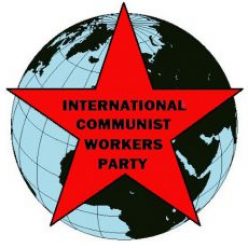
October 22— The CONAIE, the Confederation of Indigenous Nationalities of Ecuador, called a national strike which began on September 20, and lasted for four weeks. Indigenous groups from different cities and towns in Ecuador blocked major roads, halting all commercial and emergency traffic. They had a list of ten demands. But what triggered the strike was the elimination of the diesel subsidy.
Last year, the government increased taxes from 12% to 15% and eliminated the gasoline subsidy. This year, the government fired thousands of public employees and reduced the number of ministries. The president, Noboa, is the son of Ecuador’s wealthiest family. The cry heard everywhere is “Out with Noboa!” One day they will chant “Out with Capitalism!”
This is the third national strike called by the Indigenous people of Ecuador. There was an uprising in 1990. Then there were strikes in 2019, 2022, and now in 2025. Each time small achievements were won, and each time they were lost. This one is called “the resistance against the tyranny of the oligarchy” (Noboa).
The current government administration is no different from those of the past and the future. They work for the owners of capital, land, and banks in Ecuador. It does not matter who is the president or which party is in power. They work for those who feed them, the oligarchy. In 2022, the top 10% of earners in Ecuador controlled 58% of the income. The top 0.1% had the largest share of income among Latin American countries.
No one should be surprised by the emotion, anger, and militancy displayed by many of the strikers during the national strike. The people who took to the streets were much more militant and politically advanced than the strike leaders. The demands related to fuel subsidies, taxes, Indigenous territories, etc., miss the mark.
Maria, an Indigenous farmworker, explained that the strike is organized by the Indigenous people, but that “there are capitalist classes within our community. I milk my cows twice a day, at 4:00 in the morning and at 4:00 in the afternoon. Then I sell the raw milk to an Indigenous middleman for 40 cents a liter, and he sells the same milk on the same day for 60 cents a liter. I am a wage slave of the capitalist market. Not all Indigenous people are the same.”
A racist, sexist, capitalist economy will never meet the social and material needs of the masses. Its only purpose is to guarantee maximum profits for a few wealthy investors. Many Indigenous farmworkers remember in the past when villagers shared the food they grew together without money or competition.
The national strike called by CONAIE was irresponsible, poorly organized, and a display of opportunistic, misguided leadership. The government had already negotiated an agreement with the transportation workers’ unions, who were the most affected by the price of diesel. But CONAIE was left out of the agreement. Truck drivers received a bonus to compensate for the increase in diesel fuel costs. The only ones who were not part of the agreement were the intermediaries who exploit food producers by buying and selling their products at huge profits and the smugglers who illegally sell diesel to Peru and Colombia.
There is an impact on producers, but it is minimal. Very few farmers own tractors. Those must pay for the increased transportation costs, which has a negative impact. However, the strike initiated by CONAIE due to the increase in diesel prices largely ignores the true economic problem of the Indigenous people and farmworkers: capitalism.
A strike of resistance cannot provide any level of economic security to Indigenous people and farmworkers. The working class must fight for total state power.
When the masses are in struggle, they are open to revolutionary communist ideas. As a friend said, “If it wasn’t for this reformist mass struggle, incorrect as it was, I would have missed the opportunity to talk to my friend about speaking with her friends about communism. The reformist mass struggle opened her eyes to contradictions. Every set of contradictions is an opportunity to teach and learn.”
We must bring communist ideas especially to the most oppressed workers, who can and will lead the rest of the working class to seize power from the bosses and build a society without bosses, money, private property, or wage slavery. Where the masses produce collectively only to meet human need. A communist society.
Capitalist Crisis in Ecuador
Six million people in Ecuador are unemployed or underemployed, two-thirds of the working class! Poverty and survival have become a way of life.
The Ecuadorian economy reflects the global capitalist economic crisis. The price of exported oil is falling, and production is decreasing. Ecuador’s oil and fiscal revenues during the first nine months of 2025 amounted to a total of $14 billion, which barely covered 70% of Quito’s expenses. The deficit was then financed with additional debt.
The world is generating debt at a rate three times higher than that of the economy. More than 30% of the global economy is based on financial capitalism, instruments to make money with money, not on industrial production.
Ecuador’s debt amounts to $80 billion, which represents 62% of the economy. The IMF, the World Bank, and the banks of China are pressuring the government to implement an austerity program.
While these imperialists are fighting each other, they all want to deny basic social services to the masses through tax increases and the elimination of subsidies.

